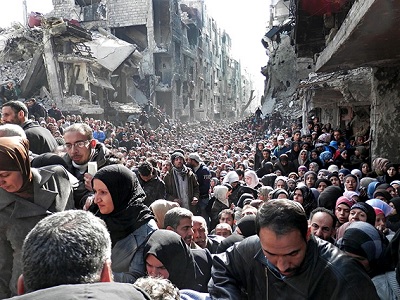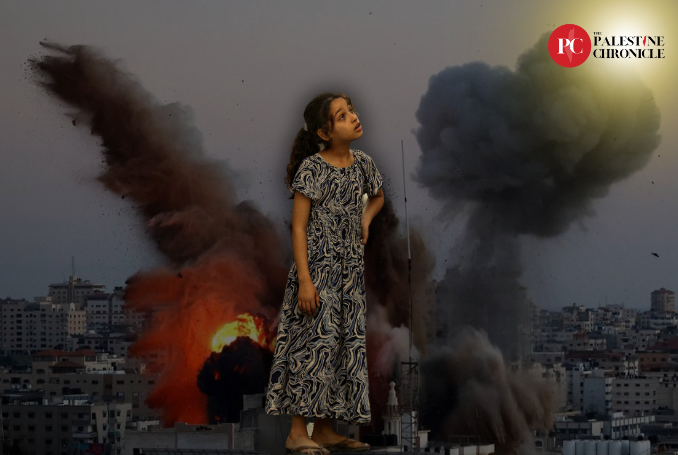
By Richard Falk
There is a new mood of moral desperation associated with the ongoing strife in Syria that has resulted in at least 135,000 deaths, 9.3 millions Syrians displaced, countless atrocities, Palestinian refugee communities attacked, blockaded, and dispersed, and urban sieges designed to starve civilians perceived to be hostile. As the second round of negotiations in Geneva-2 ended as fruitlessly as the earlier round, there is a sense that diplomacy is a performance ritual without any serious intent to engage in conflict-resolving negotiations. Expectations couldn’t be lower for the as yet unscheduled, but still planned, third round of this Geneva-2 process.
The Damascus regime wants an end to armed opposition, while the insurgency insists upon setting up a transition process that is independently administered and committed to the election of a new political leadership.The gap between the parties is too big, and getting bigger, especially as the Damascus government correctly perceives the combat tide as turning in its favor, leading the main opposition forces seemingly to seek to achieve politically and diplomatically what they appear unable to do militarily. Also, it is unclear whether the opposition presence in Geneva has the authority to speak on behalf of several opposition groups in the field in Syria.
In light of these frustrations it is not surprising to observe an acrimonious debate unfolding between American interventionists who believe that only force, or at least its threat, can thread the needle of hope. The interventionists, invoking the responsibility to protect norm that was used effectively to mobilize support in the Security Council to mandate a no fly zone in Libya back in 2011, suggest that such an approach should be used again in 2014 either to establish a no fly zone opening a corridor that will allow humanitarian aid to flow to besieged cities or to achieve regime change in Syria as the only way to end the ordeal by ridding the country of a governing process guilty of repeated mass atrocities against its own people.
The anti-interventionists point out that the Libyan precedent of 2011 is tainted by the deliberate expansion of the humanitarian scope of what was authorized by the UN Security Council to undertake a much wider campaign with the clear intent of regime change, which in fact ended with the capture and execution of Qaddafi, then the head of state in Libya. It is also somewhat tarnished by the post-Qaddafi realities of widespread militia violence and the failure to develop a coherent and legitimate governance structure. The anti-interventionist argue that introducing external military force almost always makes matters worse, more killing, more devastation, and no politically sustainable outcome, and there is no good reason to think this will not happen in Syria. Furthermore, without a Security Council mandate such a use of military force would once again be undertaken in violation of the UN Charter and international law as it could not be justified as self-defense.
Providing humanitarian relief in a situation mainly free of internal political struggle should be sharply distinguished from the realities amid serious civil strife. The response to the Somali breakdown of governability during the presidency of George H. W. Bush in 1992, is illustrative of a seemingly pure humanitarian response to famine and disease characterized by a posture of political non-interference and by the shipment of food and medical supplies to a people in desperate need. This contrasted with the supposedly more muscular response to a troubled Somalia during the early stages of the Clinton presidency in 1993 when the humanitarian mission was fused with anti-‘warlord’ and political reconstruction goals. Difficulties soon emerged as robust national armed resistance was encountered culminating in the Blackhawk Down incident that resulted in 18 deaths of American soldiers, prompting an almost immediate American pullout from Somalia under a cloud of intense criticism of the diplomacy of ‘humanitarian intervention’ within the United States. This had the disastrous spillover effect of leading the supposedly liberal Clinton White House to discourage even a minimal humanitarian response to the onset of genocide in Rwanda in 1994, which might have saved hundreds of thousand of lives. In the Rwanda context the United States Government even discouraged a modest upgraded response by the United Nations that already had a peacekeeping presence in the country, and whose commander urged reinforcements and authority to protect the targets of genocidal massacres. This failure to act in Rwanda remains a terrible stain on America’s reputation as a humane and respected world leader, and is frequently interpreted as a racist disregard of threats confronting an African population when no major strategic interest of Western countries were present on the side of the victims.
The Syrian reality since its inception was dominated by a political uprising, later an insurgency, demanding regime change in Damascus. It was also beset with a leadership deficit and by factionalism that only became worse with the passage of time. It was further complicated and confused by its proxy dimensions, both in relation to the supply of arms and with respect to diplomatic alignment.
The humanitarian relief argument to be credible, much less persuasive, needs to deal with the complexities of Somalia 2, and not act as if the humanitarian response can be addressed in detachment from the political struggle as was the case in Somalia 1. When political objectives become intertwined with a humanitarian rationale, forces of national resistance are activated on the reasonable assumption that the real goal of the mission is the political one, and the humanitarian relief is being used as a cover. As we can foresee, this complexity makes for a stiffer climb facing an advocate of humanitarian intervention in the current Syrian tragedy. There exists a more difficult burden of persuasion, although not an impossible one. Indeed, against the background of recent failed interventions, every proposed intervention confronts such a burden at some level. The Syrian case makes this burden more formidable, given the record of past interventions in the region and considering the mixture of forces that make up ‘the opposition,’ which is so far from unified even in carrying on the struggle against the Assad regime, on occasion diverting attention to take action against a rival faction.
In fact, the Syrian situation has an originality that makes the Somalia template clarifying, but hardly definitive. The Syrian political struggle is more acute and vicious than was the case in Somalia 2. Also the humanitarian crisis is deeper and the plight of many Syrians caught in the maelstrom of this horrifying war that is both internal and contains regional proxy elements in ways that make it more confusing as to the probable effects of threats and uses of force on behalf of genuine humanitarian goals.
My basic contention is that there are no easy answers at this stage as to what should be done about the Syrian situation, and dogmatic discourse for or against intervention misses the deeply tragic nature of the policy predicament for all political actors. I would feel more comfortable about the intervention debate if it were expressed in a discourse that accords prominence to the virtue of humility. Too much in Syria remains unknowable to have any confidence that a clear line of advocacy will be historically vindicated.
For me the fundamental question is what it is best to do or not do in such a desperate situation of radical uncertainty. It is not only that the interventionists, and perhaps the anti-interventionists are motivated by a convergence of humanitarian/moral considerations with geostrategic ambitions, but that the nature of these hidden calculations are discussed in governmental circles behind locked doors and transcribed in secret policy memoranda. Until we address these questions of consequences and secret goals in the context of uncertainty and unknowability, the public discourse on what to do about Syria offers limited insight into how best to evaluate policy options being endorsed by policymakers and leaders. I hope that such a discussion will ensue, and replace the rather pointless and dogmatic self-righteous indignation of both interventionists and anti-interventionists.
I remember hearing the senior State Department diplomat, George Ball, speak just weeks after he left the government in the closing years of the Vietnam War. His primary message was that he only began to understand the war when he stopped reading the cables, that is the secret highly classified messages being sent by the military commanders and their civilian counterparts in the war zone. In effect, rather than make policy more transparent its counter-intuitive reality was to shroud the reality of Vietnam in greater obscurity. It is easy to explain why. Those in the field were committed to achieving victory, and were determined to provide reassurance, however false, to the leaders back in Washington so that they could deal with growing anti-war pressures that were a combination of public fatigue after almost a decade of engagement and skepticism based on what became known as ‘the credibility gap’ between the claims of continuing progress in the war and what was actually taking place in Vietnam.
– Richard Falk is Albert G Milbank Professor Emeritus of International Law at Princeton University and Research Fellow, Orfalea Center of Global Studies. He is also the United Nations Special Rapporteur on Palestinian human rights. Visit his blog.





